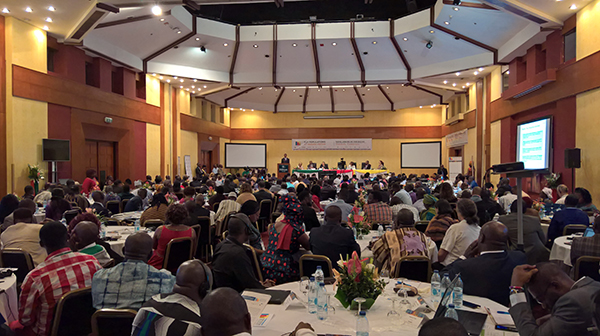Key Populations Conference in Cameroon Highlights Cutting-Edge Research
Post by Anna Abelson, graduate research assistant and MSPH candidate at Johns Hopkins Bloomberg School of Public Health and Gnilane Turpin Nunez, Senior Research Program Coordinator, Johns Hopkins Bloomberg School of Public Health
The 3rd Annual Key Populations conference held in Yaoundé, Cameroon, in September was an exciting three days focused on major successes, lessons learned and “where to go from here” for key populations.
The meeting centered on the overarching goal of “Leaving no one behind: bringing key population programs in West and Central Africa to scale to meet the 90-90-90 targets.” It brought together over 250 people from 31 countries and across all sectors: from members of the population to funders to local partners, all dedicated to discussing how best to work with and serve key populations.
While the conference focused on reducing rates of new HIV infections among key populations in West and Central Africa, it also addressed a range of health issues, including human rights, reproductive health, stigma and discrimination, and program documentation. As a member of the conference steering committee, the Health Communication Capacity Collaborative (HC3) was part of the team that designed and coordinated the conference. HC3 also moderated a breakout session on pre-exposure prophylaxis (PrEP) and Professor Stefan Baral’s presentation on implementation science on linkage and retention in care and treatment.
Presentations and breakout sessions on cutting-edge research and effective programming around key populations across West and Central Africa served as both network-building and information-sharing opportunities. As participants connected across the region with other groups working in equally challenging environments, conversations focused on how to successfully reach hidden populations and work through significant stigma challenges encountered by key populations.
The conference concluded with a review of 11 key recommendations based on the presentations, discussions and breakouts. These recommendations were introduced by HC3 (Gnilane Turpin Nunez) and accepted by the Minister of Public Health.
The recommendations focused on addressing key population needs beyond the health sector, and addressing human rights and multi-sectoral approaches to reducing HIV rates among them. For example, recommendations included encouraging differentiated models of care, prioritizing documenting successes to ensure replication, focusing on network building within an organization and across communities, and professionalizing peer educators to ensure widespread uptake of peer education throughout programs.








Leave a Reply
Want to join the discussion?Feel free to contribute!